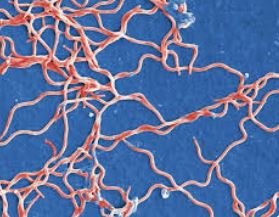
Lyme Disease:
Lyme Disease is caused by at least 20 species of Borrelia bacteria, usually transmitted by tick bites. Known as “The Great Imitator,” its symptoms mimic many illnesses. The spirochete Borrelia burgdorferi can affect any organ, including the brain, muscles, joints, and heart. Lyme is often misdiagnosed as chronic fatigue syndrome, fibromyalgia, multiple sclerosis, or psychiatric disorders, delaying proper treatment. It occurs across the U.S., especially in the East, Midwest, and West Coast, and on every continent except Antarctica. Tiny nymph ticks pose the greatest risk as their bites go unnoticed, and longer attachment increases infection chances. Ticks may also carry other pathogens like Bartonella and Babesia.
Complications of Lyme disease are serious, yet awareness remains low. Diagnosing tick-borne illness is challenging due to varying lab accuracy and costs. The CDC captures only 10% of cases, and risk maps often misrepresent infected tick numbers, as many areas lack thorough testing. Lyme disease is a silent epidemic with widespread impact. Alec’s Place urges attention to this overlooked crisis, echoing Dr. Kenneth Liegner: “The mainstream handling of Chronic Lyme Disease will be seen as one of the most shameful episodes in medical history.”
-
Expanding red rash (erythema migrans), often bull’s-eye shaped
Flu-like illness with fever, chills, fatigue, and body aches
Headache and neck stiffness
Swollen lymph nodes near the bite site
Joint or muscle pain that may shift location
Sensitivity to light or sound
Sleep disturbance and brain fog
Tingling, numbness, or burning sensations
Mood changes such as anxiety or irritability
Sore throat or mild cough
-
Severe, migrating joint pain or swelling (often in knees)
Neurological issues: neuropathy, tremors, seizures, or paralysis
Cognitive dysfunction (“Lyme brain”), memory loss, word-finding trouble
Chronic fatigue and post-exertional malaise
Sleep disturbances and unrefreshing sleep
Mood disorders: depression, anxiety, panic attacks, or irritability
Sensory hypersensitivity to light, sound, touch, or smell
Autonomic dysfunction (POTS, dizziness, temperature instability)
Heart rhythm disturbances (Lyme carditis, palpitations)
Visual or auditory changes (blurred vision, tinnitus)
Immune dysregulation leading to PANS, autoimmune or inflammatory syndromes
Relapsing or cyclical symptom flares triggered by stress or infection
-
Severe, migrating joint pain with or without visible swelling
Encephalopathy: confusion, disorientation, short-term memory loss
Encephalomyelitis: inflammation of brain and spinal cord causing weakness or paralysis
Peripheral neuropathy: burning, tingling, numbness, or electric-shock sensations
Cranial nerve palsies (facial paralysis, vision or hearing loss)
Seizures or abnormal muscle movements
Profound fatigue and loss of stamina
Cognitive decline, word-finding difficulty, slowed processing speed
Severe sleep disturbance or circadian rhythm disruption
Psychiatric manifestations: depression, panic, OCD, hallucinations, or psychosis
Autonomic instability (POTS, blood pressure swings, temperature dysregulation)
Sensory hypersensitivity to light, sound, vibration, or motion
Heart rhythm abnormalities and shortness of breath from neurocardiac effects
Immune-mediated complications such as PANS or autoimmune encephalitis
Relapsing symptom cycles triggered by infection, stress, or immune activation








